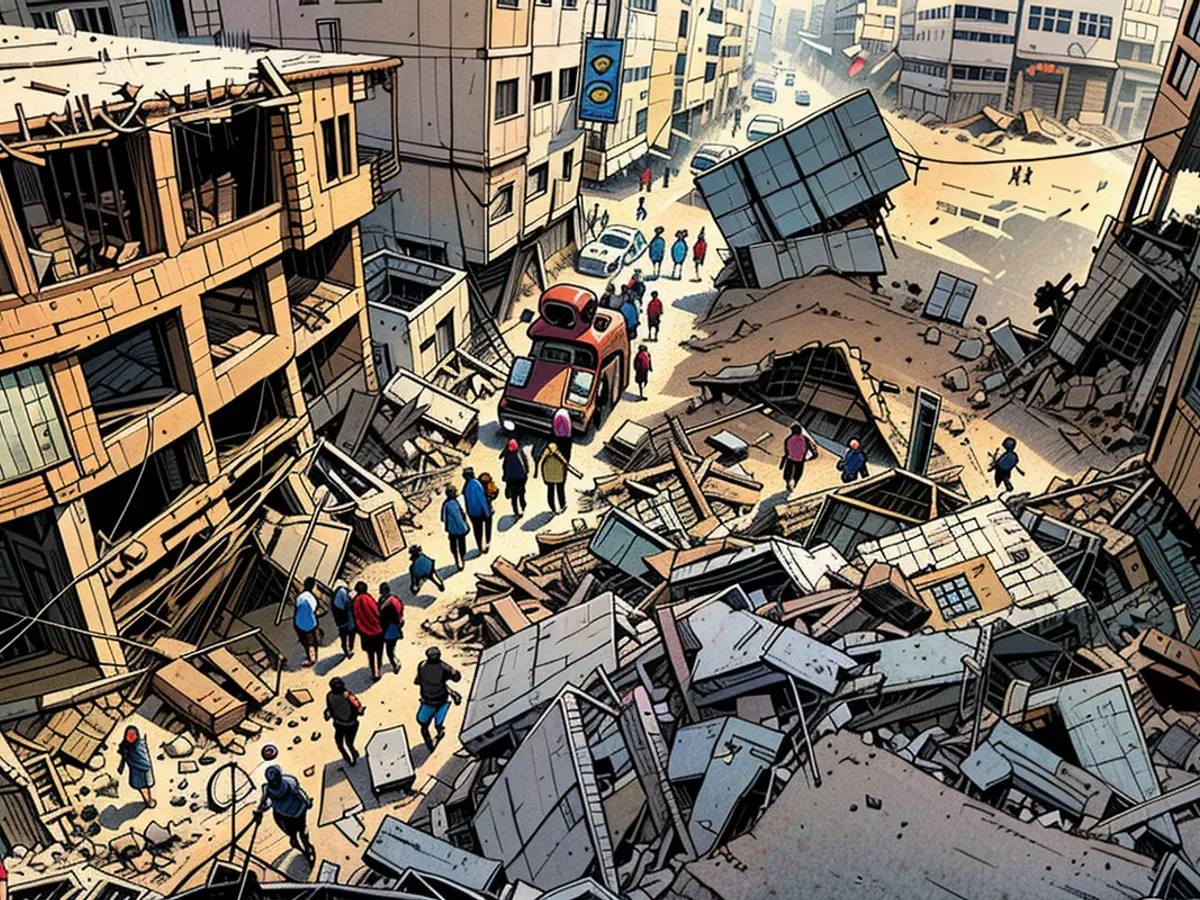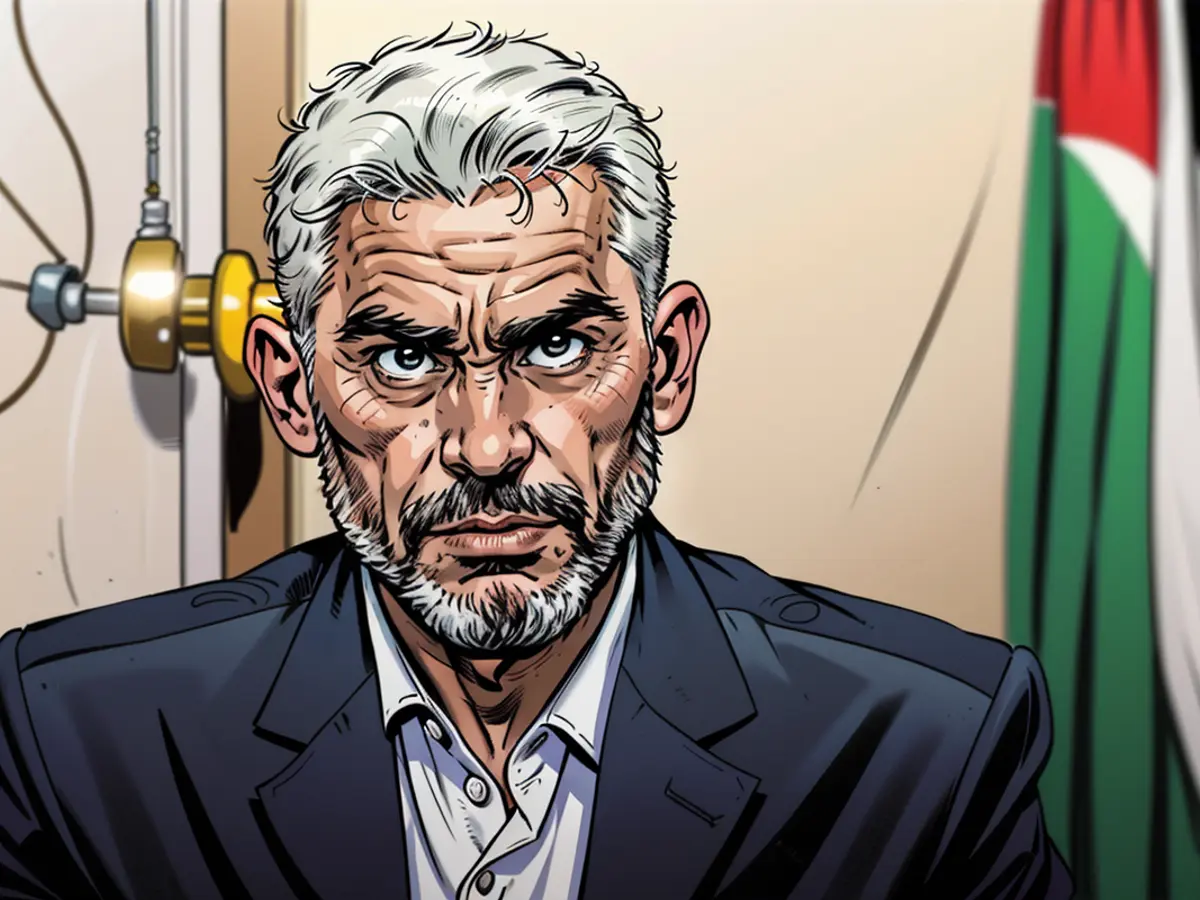Tracking Down and Eliminating Sinwar: The Successful Pursuit of Hamas' Leader After a Year-Long Manhunt
Since Hamas conducted its attacks against Israel on October 7 the previous year, Israeli forces, assisted by some discretionary aid from the United States, had been persistently tracking down the mastermind behind those actions.
On numerous occasions, they came close, forcing the Hamas leader to shift his concealed whereabouts. However, Sinwar managed to move like a phantom through the underground labyrinth of tunnels beneath the streets of Gaza, seldom appearing above ground and typically communicating through messengers to avoid electronic monitoring.
Eventually, Sinwar's whereabouts were inadvertently discovered by a group of Israeli soldiers.
Soldiers from the IDF's Bislach Brigade, a unit that traditionally trains future commanders, were tracking a group of individuals amidst the ruins in southern Gaza, obliterated by Israel's relentless bombing campaign. A shooting incident erupted. The Israelis returned fire from a tank, and later, dispatched a drone to investigate one of the damaged buildings.
Following the cessation of the firefight, troops returned the next day to investigate the debris. It was then that they realized one of the bodies was that of Sinwar.
His death marked the end of a yearlong hunt that consumed Israeli and American intelligence services – and dominated discussions regarding the requirements for putting an end to the hostilities. The CIA had established a specialized task force to track Sinwar; after October 7, the US substantially increased its intelligence assets in the region to procure information on Hamas and its leadership.
Unsurprisingly, his demise occurred as a complete surprise.
Israeli and US officials would occasionally gain a rough idea of Sinwar's general hideout location over the prolonged period. Nevertheless, the elusive Hamas leader was always on the move, making the precision of his location an almost impossible task.
He completely shunned the use of cell phones and electronic communication devices, opting for written messages to convey his instructions to both military commanders within Gaza and Hamas representatives in Doha, engaged in talks about a potential ceasefire. Intermediaries would sometimes have to wait days or weeks for Sinwar's response, as they required time to relay the messages back and forth.
For almost four months, Sinwar had not emerged into the public arena. His only known interaction with the outside world was through several letters, most recently late last month, when he penned a message to Hezbollah chief Hassan Nasrallah. The Lebanese militant group announced that Sinwar had expressed his commitment to opposing Israel and supporting the Iran-aligned alliance of regional militants known as the "Axis of Resistance."
For an extended period, Sinwar had been renowned for his meticulous and paranoid approach to personal security. It remains unclear what urged him to venture out into the open on Wednesday – a decision that left him vulnerable.
“These individuals never truly feel safe returning back into hiding,” one US official remarked.
A sequence of missed opportunities
Dozens of times, it seemed that the IDF was always merely a step behind Sinwar.
On at least three separate occasions in 2024, Israeli Defense Forces managed to penetrate tunnels that Sinwar had recently evacuated.
In January, according to a top IDF commander, DNA evidence confirmed that Sinwar had been hiding in a tunnel beneath Khan Younis in early October 2023. CNN was unable to independently corroborate this analysis.
Foreign media have been prevented from accessing Gaza independently since the conflict commenced. The only means of entry is with an Israeli military escort, limiting reporters to viewing what Israel permits them to see.
In February, alleged CCTV footage showed Sinwar within a tunnel in the same location just days after the October 7 attack, accompanied by his wife, children, and his brother Ibrahim Sinwar.
As the IDF began encroaching on Khan Younis, Sinwar's birthplace, he appeared to have retreated south. The IDF reportedly discovered his DNA in a tunnel in Rafah in August, less than a few hundred meters from where six hostages had been killed.

He was killed on Wednesday only a short distance from that tunnel, in a section of Rafah referred to as Tal Al Sultan, segregated by the Israeli military after intensive attacks from two Hamas battalions throughout the summer.
US intelligence data provided sufficient insight into Sinwar's mindset over the course of the summer.
At one point in the summer, the CIA assessed that Sinwar, feeling the weight of blame for the considerable hardship endured by Gaza, was under increasing pressure from his own military commanders to accept a ceasefire agreement and put an end to the conflict with Israel.
As Israel went about hunting down Hamas operatives hiding inside the immense network of underground tunnels, the IDF occasionally resorted to employing dogs, ferrets, and robots rather than troops.
Sometimes, when a dog would not re-emerge, the IDF worried that the animal may have succumbed to a lack of oxygen in certain parts of the tunnel that stretched multiple stories beneath ground level. At other times, the robots would be fired upon – indicating the presence of Hamas personnel.
But, despite their best efforts, Sinwar consistently evaded their grasp.
It seems likely that the IDF was not aware of his presence in Tal Al Sultan until after he was killed; during mid-September, the IDF had taken CNN and others to the region. At that time, the IDF gave no indication that Sinwar could be in the area, and it's uncommon for reporters to be led to a location where they believe individuals may be hidden.
Genetic and dental records
On Thursday morning, senior Israeli and US officials maintained close contact as the IDF worked tirelessly to ascertain the identity of the body found in the rubble in northern Rafah with complete certainty.
However, official confirmation would not come until several hours later. Yet, even before that confirmation, images of Sinwar's body instilled a sense of confidence in senior US officials that the mastermind behind the October 7 attacks had finally been eliminated.
Around noon in Washington, Israel managed to verify the deceased's identity using DNA and dental records, thanks to Sinwar's previous stint in an Israeli prison.
During his final stand, Sinwar, alongside two others, hurled grenades and opened fire on the nearby Israeli soldiers, who retaliated with their own gunfire. Wearing a vest, armed with a gun, and carrying 10,000 Israeli shekels, Sinwar escaped solo to another building.
In the last moments before his demise, as Israeli authorities claim was due to a shot to the head, Israeli troops sent a drone into the heavily damaged building Sinwar had fled to. A clip from the drone, released by the Israeli military, shows a lone figure in a mask, seated in a chair amidst dust and debris in an upstairs room. The figure clutches a piece of wood, and just as the video ends, throws it at the drone.
Iran has already lauded Sinwar as a martyr who met his end in combat, facing his adversary directly.
Over the recent months, American officials started to believe that Sinwar had grown progressively resilient—"hardened"—not only in his resolve to battle Israel in Gaza, but also in his own pessimistic viewpoint.
Sinwar did not anticipate surviving the war, according to a US official. Convinced of his impending death, he had little desire to endorse a truce, as US officials surmised—stalling negotiations in perpetuity.
Rather than pursuing peace in Gaza, American officials speculated, Sinwar sought to perpetuate the conflict without an end, placing strain on Israel and damaging its international standing.
Even up until his last breath, US intelligence officers believed, Sinwar was oblivious to the gravity of his own mortality and committed to continuing the conflict.

Following the discovery of Sinwar's body, discussions about the requirements for ending the hostilities in Gaza shifted significantly in political circles. The CIA had devoted substantial resources to tracking Sinwar, including the establishment of a specialized task force and an increase in intelligence assets in the region.
Despite numerous close encounters, Israeli forces had struggled to pinpoint Sinwar's precise location due to his meticulous security measures and evasive tactics. His avoidance of electronic communication and reliance on written messages made tracking him even more challenging.








